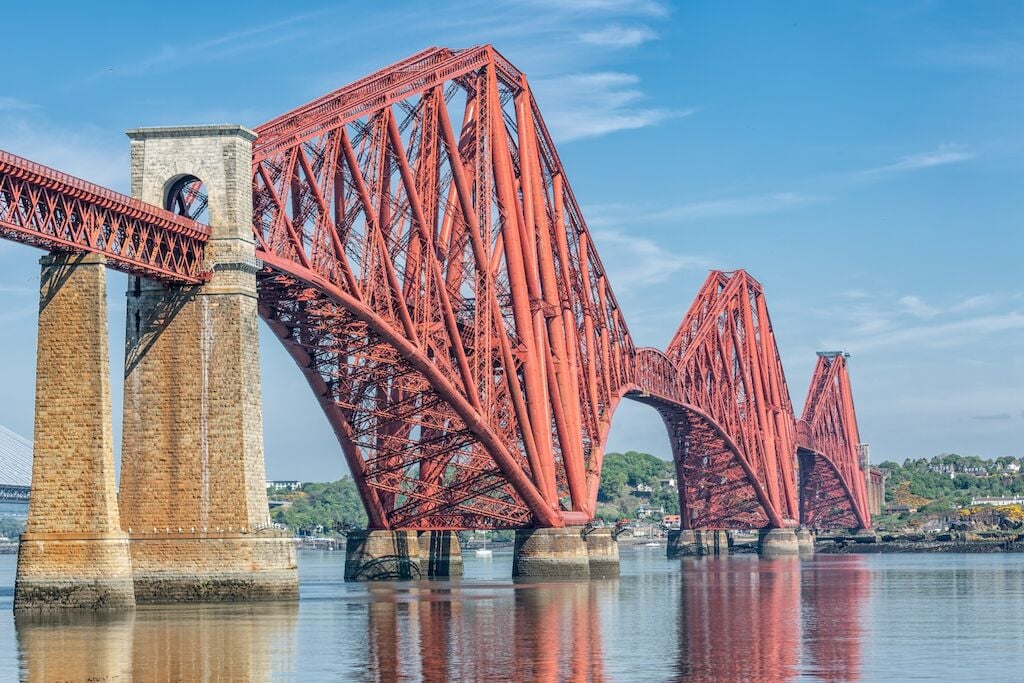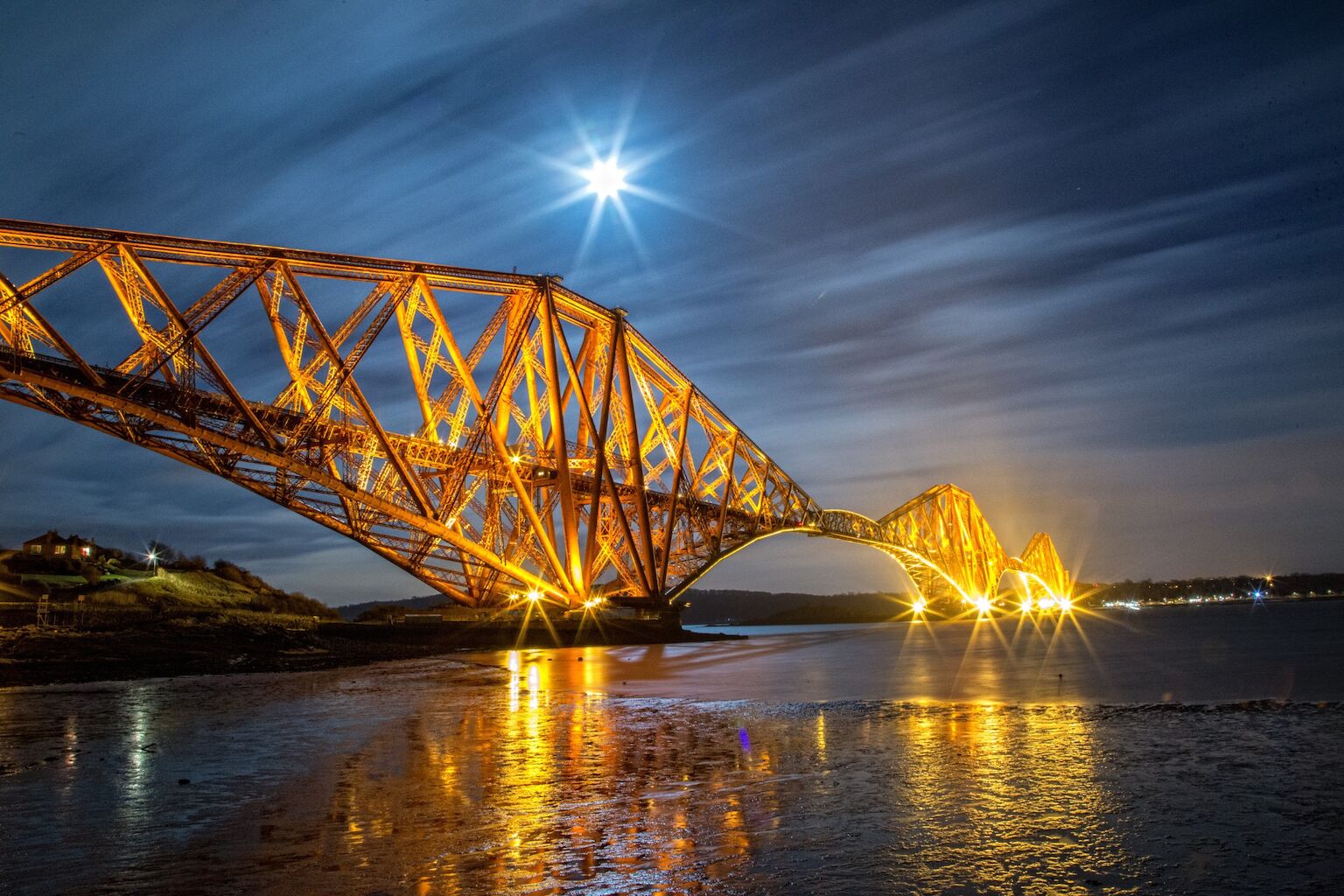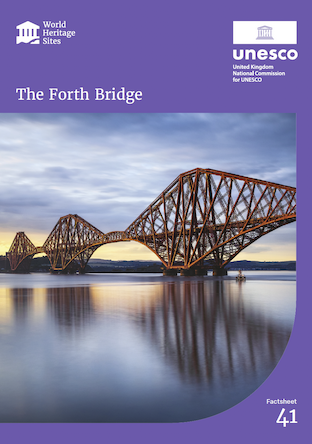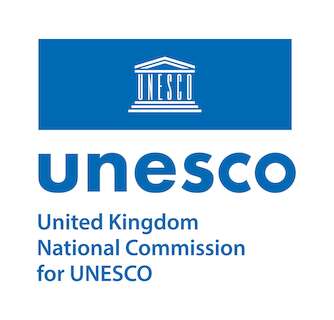The Forth Bridge
Opened in 1890, the Forth Bridge, spanning the Firth of Forth to the north-west of Edinburgh, was inscribed as a UNESCO World Heritage Site in 2015. The world’s first major steel structure, the Forth Bridge represents a key milestone in the history of modern civil engineering. Three balanced cantilever towers are joined by two suspended spans and by two approach viaducts to land escarpments. It is a vital passenger and freight rail link across the Firth of Forth, carrying 200 trains a day.
What makes this UNESCO Designation special?
The Forth Bridge was designed by Benjamin Baker under Sir John Fowler and constructed by a consortium including William Arrol of Glasgow. The work began in 1883 and took six years to complete, with a workforce peaking at 4,600. More than 50,000 tonnes of steel and 6.5 million rivets were used in its iconic red trusses.
Opened on 4th March 1890, the bridge completed an unbroken East Coast railway route from London to Aberdeen. The Forth Bridge held the world record until 1917 for longest and second longest bridge spans at 521m. The expression “painting the Forth Bridge” refers to a never-ending task, although a major refurbishment of the bridge completed in 2011 put pause to that.
The Forth Bridge sits near the Forth Road Bridge, opened in 1964, and the Queensferry Crossing (2017). These complimentary structures represent pinnacles of engineering as suspension and cable-stay bridges respectively. Bridging the historic settlements of North and South Queensferry, the bridges are set in an area that has history, beauty, wildlife and community spirit in abundance. Visitors can enjoy stunning views of all three bridges along the Forth Bridges Trail.













